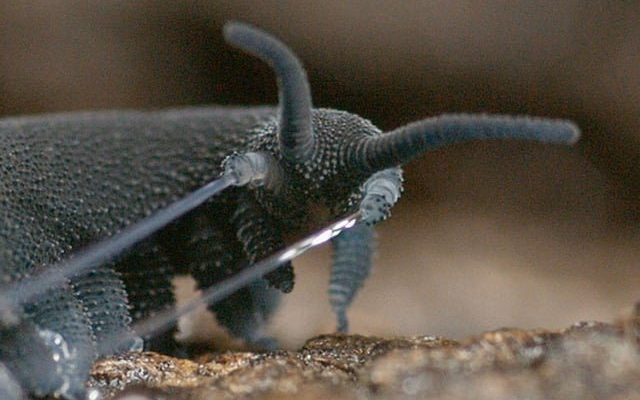
Velvet worms, or onychophorans, have a unique way of navigating their environment. They’re like nature’s stealthy ninjas, relying on a blend of tactile and chemical senses to detect their food. With their soft, segmented bodies and tiny legs, they move smoothly through leaf litter or damp soil, ready to pounce on unsuspecting insects. Let’s dive into how these little hunters manage to locate prey in the dark and what makes their abilities so special.
What Are Velvet Worms?
Before we get into their hunting techniques, it’s helpful to know a little about velvet worms themselves. These creatures are not quite insects, nor are they worms. Velvet worms belong to a separate category called **Onychophora**. They have a soft, velvety appearance—hence the name—and can often be found in tropical and subtropical regions.
These fascinating animals can grow up to several inches long and have a body structure reminiscent of their ancient ancestors, which date back to over 500 million years ago. With around 200 species worldwide, these creatures vary in color and size, but they all share certain key features, like their segmented bodies and distinctively clawed limbs that help them navigate their surroundings and capture prey.
How Do They Sense Their Environment?
You might be wondering, “How do velvet worms even know where to find their food?” Well, they rely on a combination of senses that allow them to perceive their environment effectively. Mainly, they utilize **chemoreception**, which means they detect chemical signals in the air or substrate around them.
Imagine walking into a bakery—before you see the pastries, you can smell them from a distance. Velvet worms do something similar. They have specialized sensory structures called **antennae** that help them pick up scents and chemical cues released by potential prey. This ability lets them track down insects or other small animals, even in complete darkness.
Moreover, their skin contains tiny sensory hairs that can detect vibrations and changes in air pressure. This helps them feel movements in their surroundings, allowing them to pinpoint where their next meal might be lurking. It’s a remarkable blend of abilities that makes them effective hunters.
The Role of Mucus in Prey Detection
Another fascinating aspect of velvet worms’ hunting strategy is their use of **mucus**. When a velvet worm is on the hunt, it can exude a sticky mucus from glands located on its body. This mucus does more than just help the creature move smoothly—it also plays a pivotal role in helping them find prey.
Here’s how it works: when the mucus is secreted, it can trap chemical signals from nearby insects. The velvety texture allows it to capture scents efficiently. As the worm tracks these scents, it can follow the trail laid down by the prey, leading them right to their dinner. Talk about a clever hunting tactic!
Ambush and Capture Techniques
Once a velvet worm detects its prey, the real action begins. They are experts in ambush hunting. A velvet worm can remain perfectly still and blend into its surroundings, making it hard for potential meals to spot them. This stealthy approach is crucial since many of their prey animals are fast-moving and highly alert.
When a meal gets too close, the hunt is on! Velvet worms have a unique method for capturing their prey. They can extend a pair of **sticky oral appendages**, almost like a chameleon’s tongue, to snag insects or small arthropods. This sudden burst of speed and accuracy is impressive, allowing them to secure prey before it even knows what hit it.
Additionally, the adhesive properties of their mucus ensure that any prey caught is firmly stuck, offering the worm a high chance of a successful meal. This ambush strategy, combined with their sensory abilities, makes them one of nature’s fascinating predators.
Adaptations for Nocturnal Life
Velvet worms are specially adapted for life in the dark. Their ability to detect prey in low-light conditions isn’t just about their sensory skills; it’s also about their body structure and environment. Typically found in damp and humid habitats, like rainforests, they thrive where moisture is abundant. This environment helps maintain the delicate balance they need for survival.
The dark, humid conditions also provide cover from predators. By being active at night, velvet worms can avoid many of their daytime predators, such as birds and lizards. This nocturnal lifestyle means they can operate without the constant threat of being seen and caught themselves, allowing them more freedom to hunt.
Their soft, flexible bodies are another advantage. This body plan helps them navigate through tight spaces and leaf litter, making them adept at sneaking up on their prey without drawing attention.
Why Understanding Velvet Worms Matters
You might be wondering why we should care about velvet worms and their remarkable hunting methods. Well, studying these creatures can teach us a lot about evolution, adaptation, and even the ecosystems they inhabit. Their unique adaptations offer insights into how life can thrive in various environments, including the darkest corners of our planet.
Additionally, learning about velvet worms can inspire biomimicry in technology and design. For example, scientists often look to nature to solve human problems, and the stickiness of the velvet worm’s mucus might inspire new adhesive technologies. Who knows? The next big innovation could come from studying these unassuming creatures!
Velvet worms may be small and often overlooked, but their ability to detect prey in the dark is nothing short of remarkable. With their unique combination of sensory adaptations, ambush tactics, and environmental adjustments, they showcase the beauty of nature’s engineering.
Whether you’re a curious nature lover or a budding scientist, understanding these creatures opens up a world of fascination. So, the next time you find yourself in a dimly lit forest, remember there could be a stealthy velvet worm nearby, patiently waiting for its next meal. These nocturnal hunters remind us that, even in the shadows, life is thriving and adapting in incredible ways.

